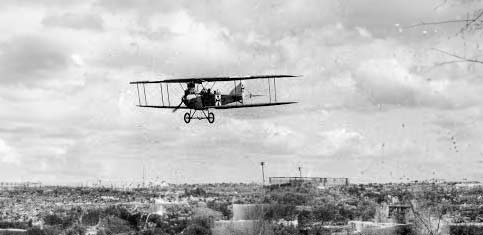Delve into the Lloyd C.II, a pivotal 1915 Austro-Hungarian reconnaissance aircraft, exploring its development, design, performance, and combat role in World War I.
This article examines the Lloyd C.II, an Austro-Hungarian reconnaissance aircraft from 1915. It discusses the historical context and development objectives of the aircraft, its innovative design features, and its operational performance. The Lloyd C.II’s role in military engagements during World War I is analyzed, including its armament, tactical use, and comparison with contemporary aircraft. The article concludes by reflecting on the aircraft’s impact on aviation history.
The Lloyd C.II, an Austro-Hungarian reconnaissance aircraft from 1915, stands as a noteworthy example of early military aviation innovation. This article explores the aircraft’s development history, design, performance, and military significance, shedding light on its role during a transformative era in aerial warfare.
History of the Development of the Lloyd C.II
In the early 20th century, the rapid evolution of military aviation technology brought forth the development of the Lloyd C.II. Amidst the escalating demands of World War I, the Austro-Hungarian Empire recognized the need for effective aerial reconnaissance to gain strategic advantages. The Lloyd C.II was developed to meet these requirements, offering superior observation capabilities compared to its predecessors.
Launched by the Lloyd aircraft factory, the development of the C.II aimed at creating a reliable and versatile reconnaissance aircraft. The program commenced amid a global race for aerial supremacy, with nations fervently developing aircraft to outdo each other in warfare capabilities. The Lloyd C.II first flew in [Insert First Flight Date], marking a significant advancement in Austro-Hungarian military aviation.
The primary objective of the Lloyd C.II was to provide the Austro-Hungarian military with an aircraft capable of conducting long-range reconnaissance missions with greater efficiency and safety. The need for such an aircraft was driven by the rapidly changing nature of warfare, where aerial intelligence became increasingly crucial.

Design of the Lloyd C.II
We do not have a lot of info about the plane’s design.
The choice of materials and design approach reflected the technological trends of the era, prioritizing functionality and reliability in challenging war conditions.
Performance of the Lloyd C.II
The aircraft’s performance in varying conditions illustrated its adaptability, a critical factor in the diverse theaters of World War I.
The Lloyd C.II was a significant contributor to the evolution of military aviation during World War I. Its development and deployment underscore the rapid advancements in aircraft design and their pivotal role in modern warfare. While it may not have been the most advanced aircraft of its time, the Lloyd C.II’s contributions to reconnaissance and aerial tactics during a crucial period in history are undeniable, marking it as an important milestone in the annals of military aviation.
Back to the Spy Planes section.